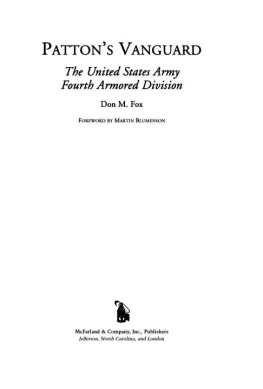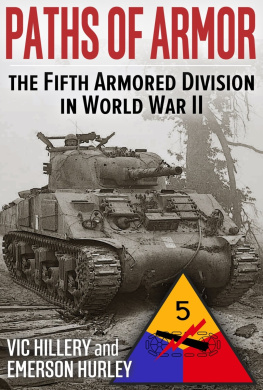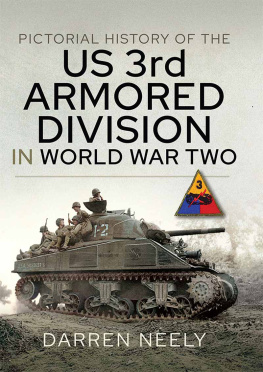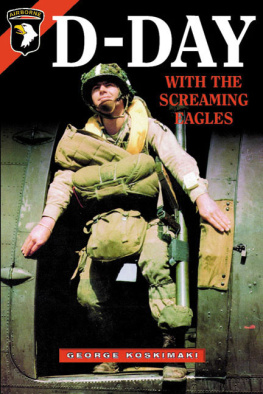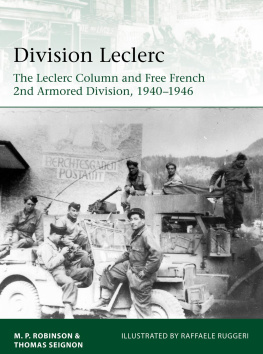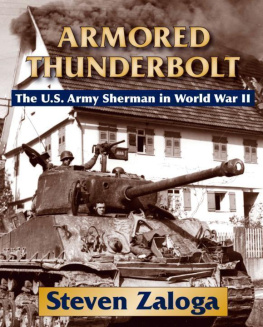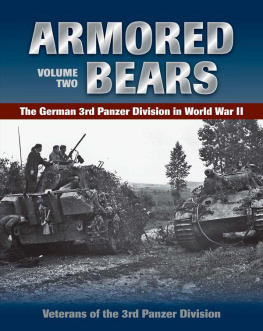Don M. Fox








Acknowledgments
Of all the resources utilized in the preparation of this work, none is more important than the men of the Fourth Armored Division. While conducting my research, I came in contact with several veterans, either face-to-face, via the telephone, or through written correspondence. I would like to thank the following men who took time out of the twilight of their lives to share their experiences:

There are several other people who deserve special recognition for their contributions. First, I would like to extend my warmest thanks to Evelyn Irzyk and Marion Leach. Both of these women welcomed me into their homes and were kind enough to let me steal their husbands away from them for many hours of conversation.
Thanks are also given to Kay Besedick, who made available the art of her late husband, Frank. He served on the operations staff of the Fourth Armored during the war and created most of the illustrations for the division's official history. Kay's daughterin-law, Susan, went the extra mile to make Frank's art a part of this project.
I have long admired the writing of Martin Blumenson. The quality of his life's work has earned him a spot among a very select group of military historians. His foreword is an invaluable addition to this work, not only because of his stature, but also because of his incredible knowledge of the subject. I am extremely grateful to him.
Colonel John S. Wood, Jr., provided a valuable and unique perspective from the vantage point of both soldier and son, and I greatly appreciate his help.
To David Wissolik, Ph.D., my thanks for his invitation to quote from Men of the 704th (Buchanan, Richard R., et al., eds.), for which he was an editor.
The reader of a unit history of this sort can have a tough time following the action without the aid of quality maps, and I am thankful that I had the opportunity to work with Jason Petho. His maps will no doubt enable the reader to navigate their way across Europe with the Fourth Armored Division.
Many of the veterans mentioned above reviewed portions of the manuscript at various stages of its development, and I extend my thanks to each of them. But none performed the task as exhaustively as Al Irzyk and Jimmie Leach. I owe both of these men a great debt for their edits, corrections, commentary, and encouragement.
Jamie Leach played a critical role. Had he not taken the time to pass on my initial correspondence to his father, I might have stumbled coming out of the blocks, and never recovered. Thank you, Jamie, for embracing a request from a total stranger.
I owe a special expression of thanks to James Kelly, whose father, Lt. Earl J. Kelly, served with the 10th Armored Infantry Battalion. His contribution regarding Lt. Charles Gniot provided a poignant ribbon with which to wrap the history of the Fourth Armored Division.
Nelson Wertz is the nephew of Corporal Lester Cussins, a member of the 51st Armored Infantry Battalion killed in action on November 9, 1944, at the town of Fonteny. Nelson was kind enough to hunt down several documents for me at Carlisle Barracks.
I would also like to acknowledge the professional work of Jim Parker at Double Delta Industries, Inc., who conducted a search of the National Archives for many of the photographs in the book.
To help ensure that my narrative was hitting the mark with a broad audience, I enlisted several friends to read early versions of the manuscript. I would like to thank David Parks, Steven Wyckmans, Todd Willoughby, and Jim Puff for their feedback and encouragement. In a similar vein, my appreciation goes out to many members of the Blitzkrieg Wargaming Club (too many to mention here) who offered words of support during the project.
Last, but absolutely not least, I must give immense thanks to my wife, Stephanie, and my sons, Alex and Andrew. During the two years I spent working on this project, I was often "missing in action" under my own roof. It wasn't always easy, but the fact that I was able to finish this work stands as testimony to their patience and support.
Contents
v
ix
List of Terms
and Abbreviations




Foreword
by Martin Blumenson
Don M. Fox has written a stirring book about a superb armored division operating in the European Theater of Operations in World War II. He has shown how the various parts of the organization functioned and fought. He has enshrined the names of the heroes who made armored warfare work, in this case, with such precision and effect.
Tanks are relatively new instruments in the history of war. They came into existence in the First World War, and George S. Patton, Jr., was the initial officer assigned to the U.S. Tank Corps, newly formed in the American Expeditionary Force. Patton was the foremost American tank expert, and he led his tank brigade to distinctive success in the St. Mihiel and Meuse-Argonne offensives.
After the war, the Tank Corps lost its independence and became part of the Infantry branch. During the interwar years, a time of penurious budgets and public indifference, the military suffered, and tank warfare and mobility languished. The blitzkrieg victories of the Germans in Poland and France in 1939 and 1940 ushered in armored warfare and stunned the world.
To develop an organization able to stand up to and defeat the Germans, General George C. Marshall, the U.S. Army Chief of Staff, created the Armored Force, which activated and trained armored divisions. Patton once again became a key figure in the emergence of American armored warfare - that is, the combined force of tanks, infantry, self-propelled artillery, and close support aircraft.
The 2nd and 3rd Armored Division, as Don Fox makes clear, were heavy, meaning that they were larger than the 4th, 5th, 6th, and the others activated afterwards. The latter were smaller in both personnel and equipment and designed to be more flexible.
Patton, the Third Army commander, is regarded as the master of armored mobility. Although the First Army had more armored units, Patton's Third was the premier organization in its handling of troops, showing drive, audacity, and combat effectiveness.
One of Patton's favorite units in his marvelous campaigns was the 4th Armored Division. Its chief, John Shirley Wood, has been dubbed Patton's most intelligent apostle. Known as "P" for Professor because he tutored classmates at West Point, Wood was smart, loyal, and sometimes eccentric. During his studies at the Command and General Staff College at Fort Leavenworth, Kansas, Wood ostentatiously read a newspaper in class while the instructor lectured. In Brittany, he complained that the high command was "winning the war the wrong way."

